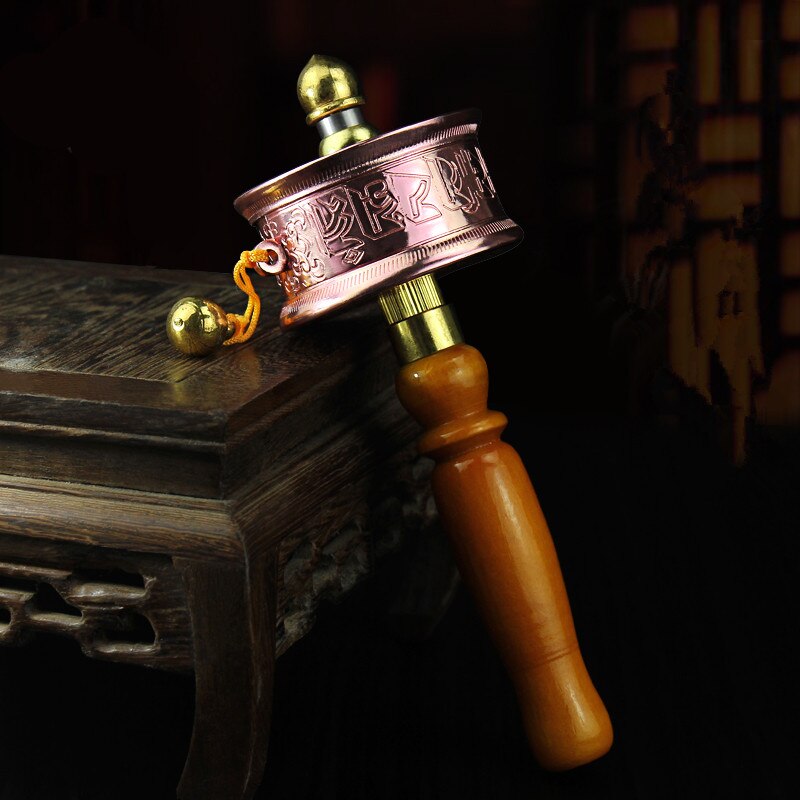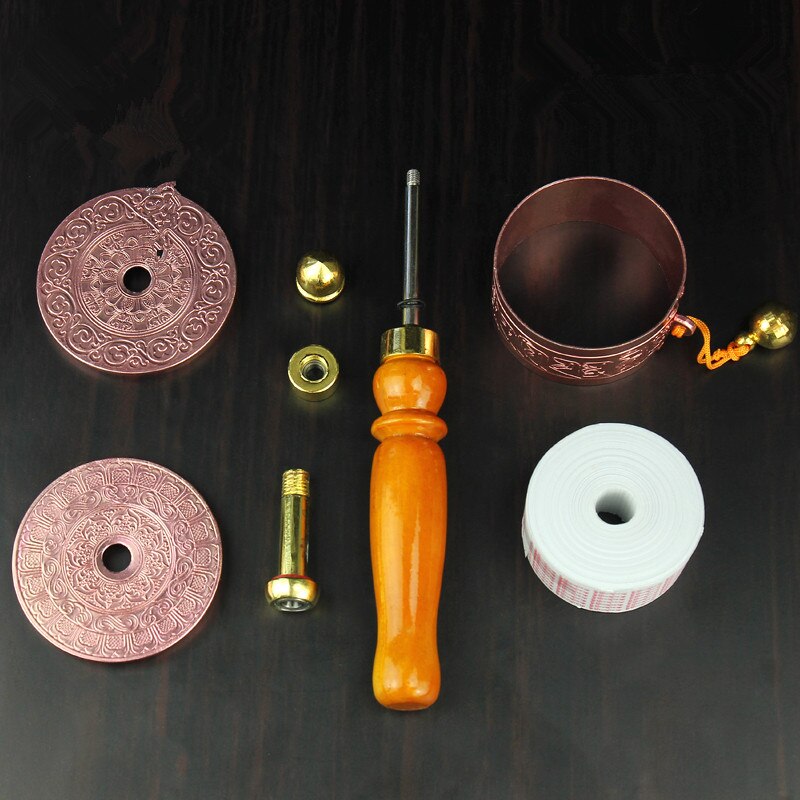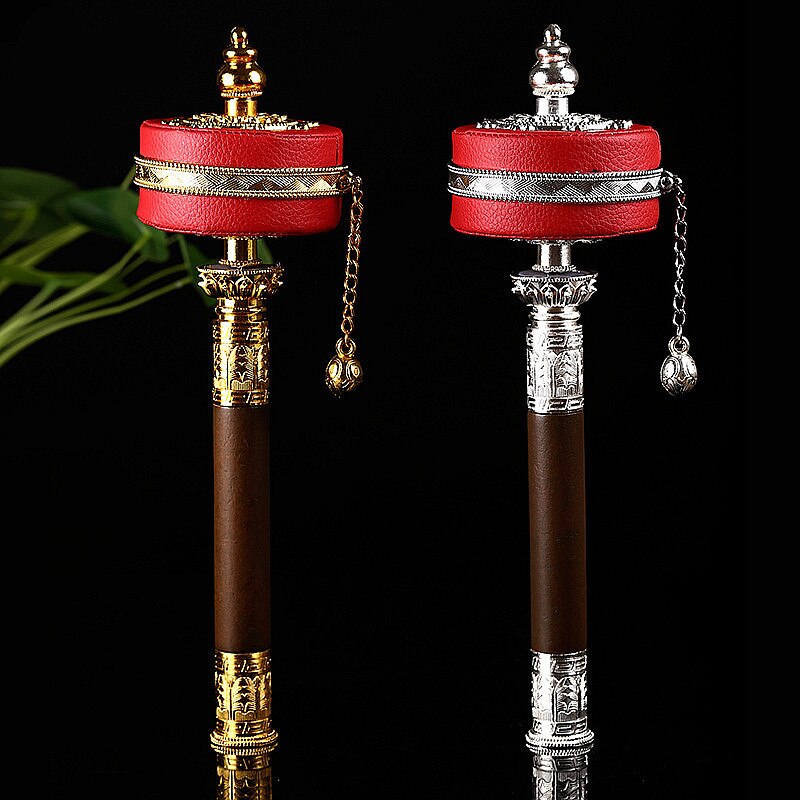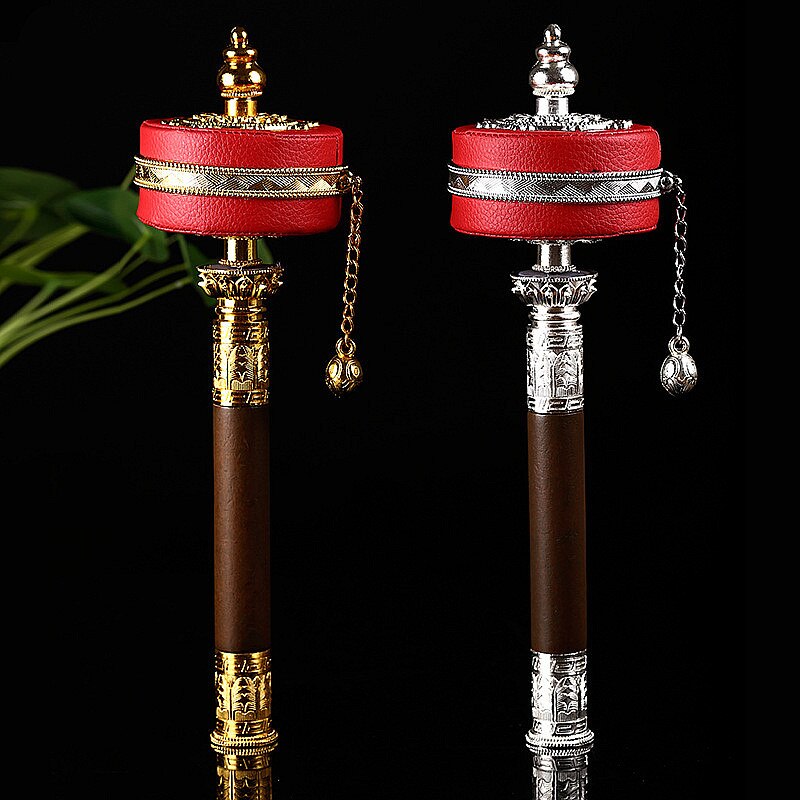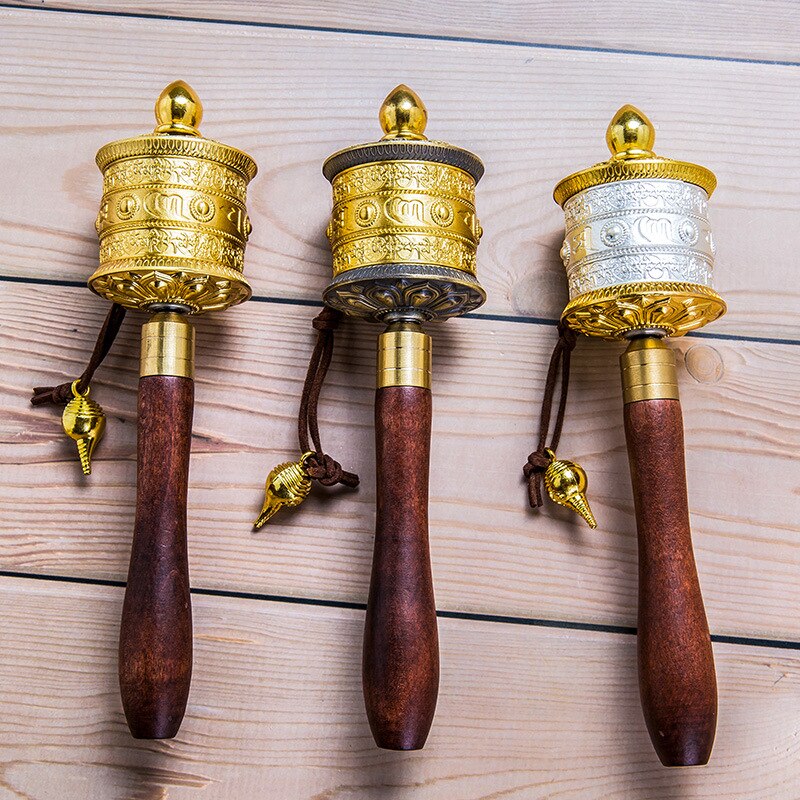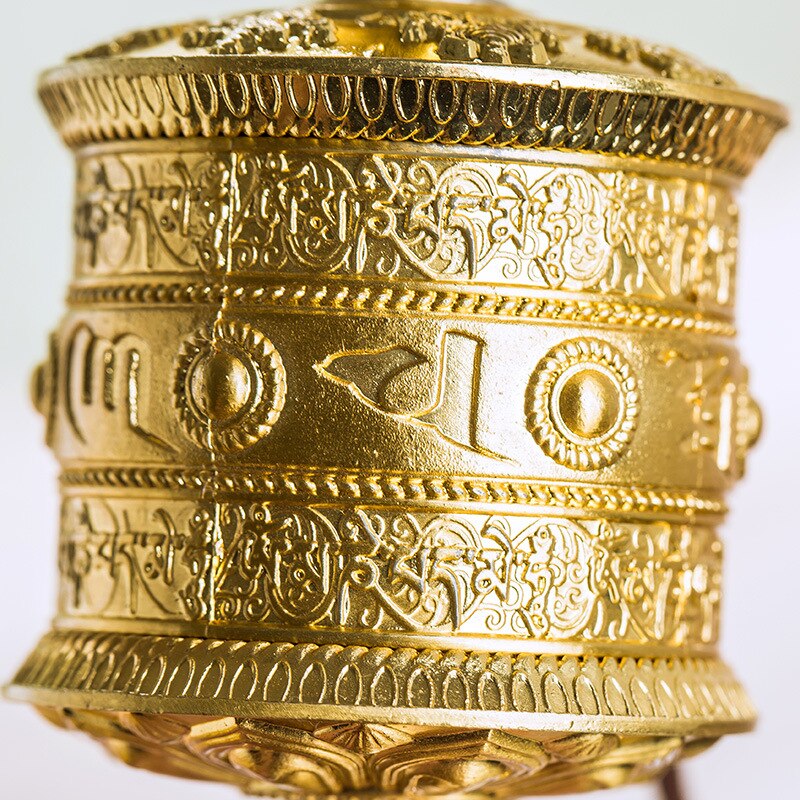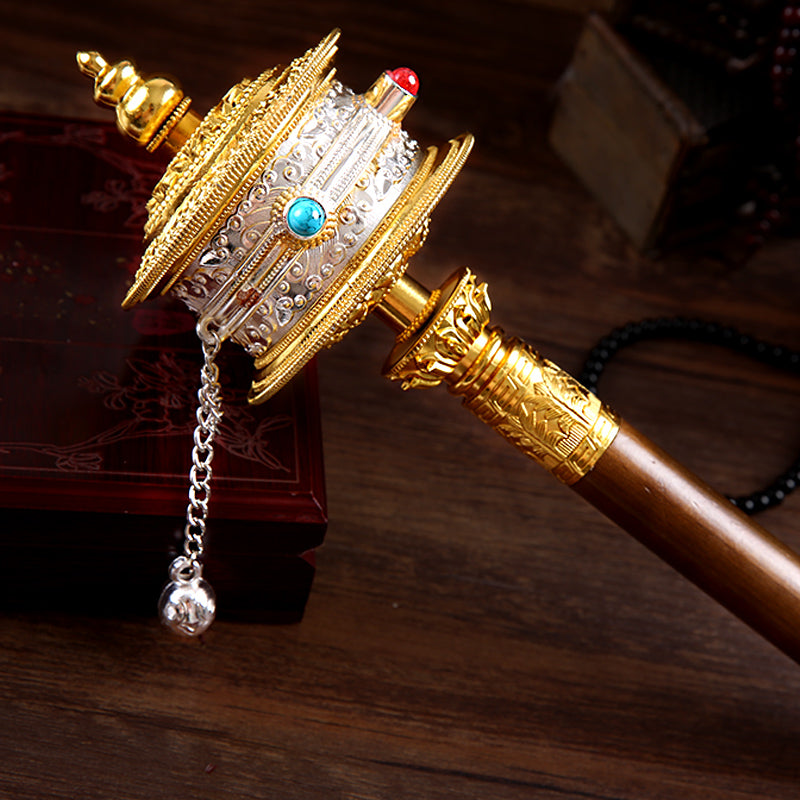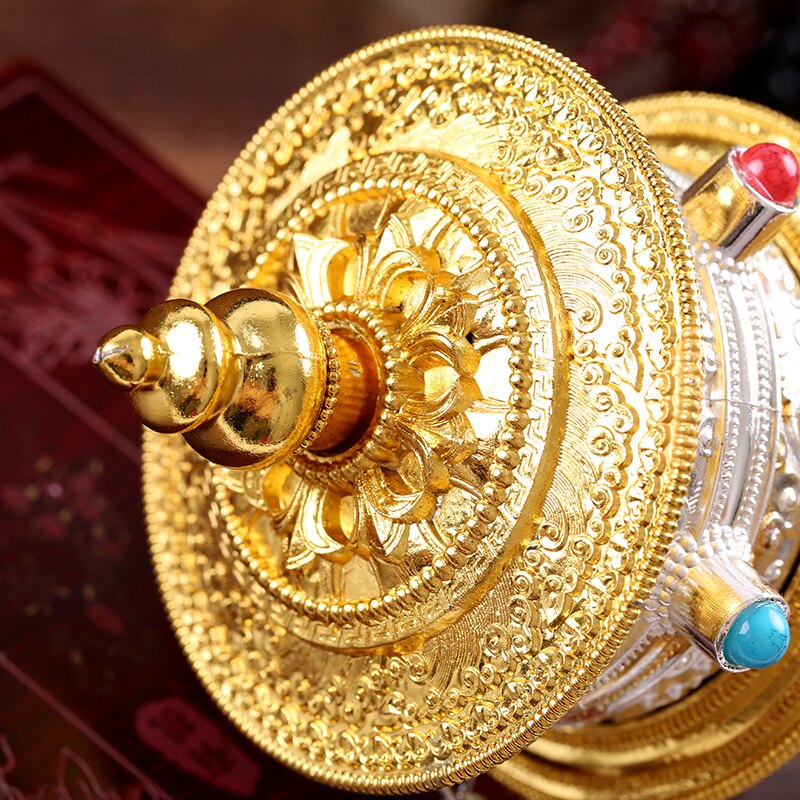Your Cart is Empty
🙏 La livraison est offerte sur tous vos achats ! 🙏
🙏 La livraison est offerte sur tous vos achats ! 🙏
🙏 La livraison est offerte sur tous vos achats ! 🙏
Notre site est chiffré de bout en bout par un protocole SSL et les paiements sont sécurisés via Stripe
Nous offrons la livraison sur tous nos produits partout dans le monde. (Hors DOM-TOM)
Vos commandes sont validées & préparées dans les 24 à 48 heures qui suivent vos achats.
 Livraison Offerte
Livraison Offerte
€119,99 €125,99 You Save 4% (€6,00)
Collections: Prayer wheel
Buddhist prayer wheels serve multiple Buddhists in the Tibet Autonomous Region every day on top of the world, sometimes for hours. The practitioners turn the prayer wheels to associate blessings, to relieve all men and to purify their chakra.
According to the Grand Master Dalai Lama, "To the privilege of living beings, Buddhas and Bodhisattvas manifest themselves inside a Buddhist prayer wheel with Guanyin mantras to totally purify our corrupting chakras and our blacknesses, and to commit to actualization of the Path of Enlightenment concretizations. ”
Spinning a Buddhist Guanyin mantra prayer wheel with countless numbers of mantras in it corresponds to communicating countless numbers of mantras, but it is done in a fraction of the time. The extension of benefits is also received with the help of prayer wheels powered by wind and water. Any wind or water in contact with the prayer wheel will be purified by the prayer wheel and can therefore purify anything it touches from unfavorable karma.
Buddhists are commonly seen on their excursion equipped with prayer wheels in their hands, or during their pilgrimage, they spin a Buddhist prayer wheel with Guanyin mantras in the monasteries and Buddhist centers they visit.
At each of the Guanyin mantra Buddhist prayer wheel turns, the Buddha whose mantra is imprinted on it flows from the wheel into bodies as innumerable as mantras. So, if there are one billion Manjushri mantras inside the Buddhist Guanyin mantra prayer wheel, then one hundred Manjushri expressions will be realized at each of the turns of the Buddhist Guanyin mantra prayer wheel and will benefit sentient beings. of the world.
However, the benefits of spinning the wheel of the Buddhist Guanyin mantra prayer wheel with a mindful mind are believed to be a hundred times more qualitative than spinning it with a scattered mind.
A Buddhist Guanyin mantra prayer wheel is a sample of Buddhist technology. This method allowed pilgrims to increase the number of prayers they said by large numbers.
Indeed, the Buddhist mantra Guanyin prayer wheel contains duplicates of mantras like that of Avalokiteshvara the mantra om mani padme hum. The mantra is imprinted on sheets of silk as many times as possible, constantly in the thousands. The document is wound around a pivot and contained in a protective barrel.
Lately, the microfilm process has made it possible to invoke millions, if not hundreds of millions of prayers in the blink of an eye
The size of the prayer wheels fluctuates from the small wheel held in the hand to the disproportionate wheel screwed into the wall of a temple, like a moving pylon.
They are made to be rotated by hand, by wind, water or ignition. When built into a building, pilgrims walk around the building clockwise and rotate the mills, brushing against them. Therefore, they enjoy the benefit of avoiding the sacred temple and enjoying the mantras sent using the Buddhist Prayer Wheel Guanyin mantras.
Prayer wheels are made in several calibers: they can be small and hung from a stick or pole, and turned on purpose; medium in size and hung in buildings or monuments, or oversized and permanently rotated with the help of a water mill. However the small Buddhist Guanyin mantra hand-held prayer wheel are by far the most popular.
Simply touching and rotating a Buddhist Guanyin mantra prayer wheel grants incredible purification and collects extraordinary benefit. It is believed that the more mantras one recites, the more reverence one gains, which increases one's possibilities of enjoying a more transcendent incarnation and definitively touching nirvana.
Having or spinning the Guanyin Buddhist mantra prayer wheel is described as so effective that its influence is compared to that of thousands of Buddhists praying for decades.
One of the advantages of the Buddhist Mantra Guanyin Prayer Wheel is that it embodies all the activities of the Buddhas and Bodhisattvas of the 10 directions. For the benefit of Men, Buddhas and Bodhisattvas show themselves in the prayer wheel to purify all of our negative karma and confusions, and to force us to actualize the achievements of the path to enlightenment.
Prayer using the Buddhist mantra Guanyin prayer wheel is found to grant whatever a monk wants.
It is inflexibly believed that rotating the Buddhist Prayer Wheel Guanyin mantras with remorse and abjection will encourage you to refuse the four evil deeds, the five actions of immediate retribution, the eight evil views and finally the ten non-virtues.
Anyone who spins the Buddhist Guanyin mantra prayer wheel during their lifetime should never be reborn with irregularities in their life, nor with manifestations such as blindness, deafness, dumbness or infirmity.
/ p>
Prayer wheel: Mani wheel (a hand-held prayer wheel)
Prayer wheel: Water wheels (turned by flowing water)
Prayer wheel: Fire wheel (turned by the heat of a candle or an electric light)
Prayer wheel: Wind wheel (a kind of prayer wheel turns thanks to the wind)
Prayer wheel: Fixed prayer wheels
Prayer wheel: Electric Dharma Wheels (powered by electric motors)
Spinning this Buddhist Guanyin mantra prayer wheel and uttering it is analyzed as one of the most thoughtful and beneficial actions. Frequently built on the fringes of stupas and monasteries, a large number of Buddhist prayer wheels can be counted in countless numbers for pilgrims to spin as they walk past or around buildings or stupas. clockwise.
A famous example of many prayer wheels at one site may be the prominent Swayambhunath stupa, where many prayer wheels are set up at the entrance to the huge Swayambhunath stupa. Buddhist prayer wheels is: "OM MANI PADME HUM" or "OM MANI PEME HUNG".




